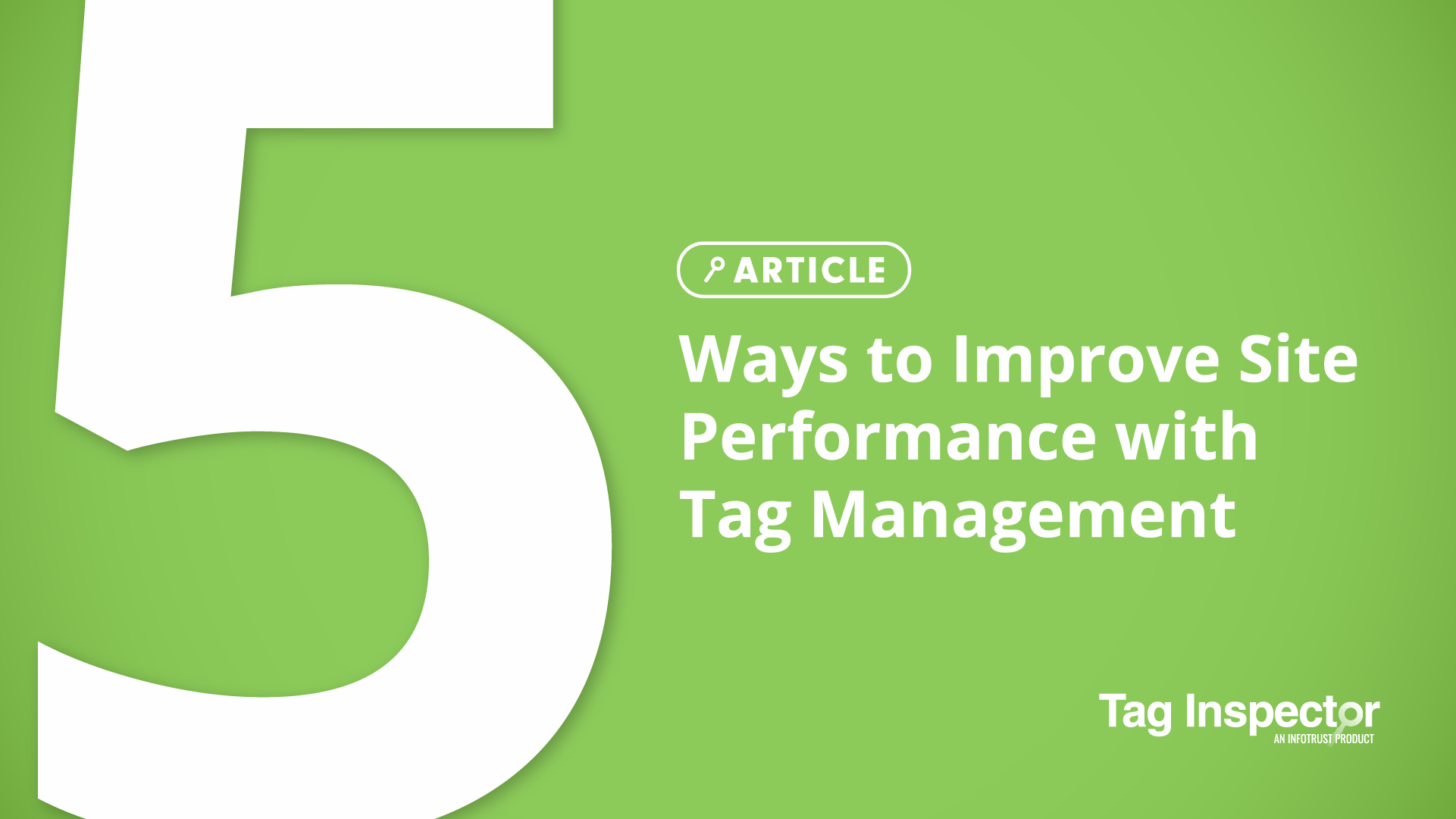Performance is always top of mind when you talk about websites. Most organizations are extremely sensitive to user experience and the difference a few seconds to a few hundred milliseconds can make on user engagement. Due to these concerns, most organizations are looking for ways to improve these metrics—and this is where tag management comes in.
Long gone are the days where marketers get to track and implement as many tags and data points as they wish. Users have an unlimited number of options to grab their attention. Focusing on your tag management platform and implementing a few improvements in its architecture can impact this journey in a positive way.
Luckily, tag management platforms have come a long way over the years in improving their code to be more performant; to make their platforms more resistant to errors; to lower the impact of their code on existing code; and make things easier to use. Due to a lot of factors, many organizations have had a free-for-all with tag management with many hands in the proverbial cookie jar, which can lead to redundant code, slower sites, poor data quality, and ultimately poor user experience. Please note that this list is platform-agnostic. Whether you are using Google Tag Manager, Adobe Launch, Tealium, or some of the smaller tag management platforms, these should be applicable and start a good conversation surrounding performance and data governance in general. Let’s get started.
1. If your platform supports templates, use them.
Use the prebuilt templates. Most templates are written and supported directly by the vendors who benefit from the scripts and your marketing dollars. This allows for easier management of the tag in the platform but also reduces the injection of code on the client side. Since they are maintained and supported you get the latest most updated code. If you don’t have access to templates, make sure to audit your vendor code regularly and update to the latest scripts at a minimum every 6 months. Using custom html/scripts and old code increases the likelihood of browser conflicts, lack of data, and poor performance.
2. Leverage the use of the platform as a library.
At this point in the life cycle of tag management, the platforms have come a long way in supporting most use cases. From debugging, timing, performance, and compatibility, the platforms themselves offer multiple avenues to capture data and trigger pixels at different times during the user journey. The more we rely on the native features of the platform, the more optimized and smaller your payload. Use the native features such as lookup tables, variables, and data mapping to capture the data and pass that to your tags.
3. Reduce unused triggers and variables and standardize.
Each byte that the tag management platform injects on the client side increases the burden on every user and as any engineer knows, taking over someone else’s code is challenging at best and a nightmare at worst. Reducing duplication and standardizing your platform makes it much more maintainable and governable. You can easily see when something doesn’t meet your standards, or when something new is added. Standardizing and deduping assets in your tag management system also allows the analyst/engineer to find relevant assets easier and faster and spend less time on searching and more time on solutions. Audit your platform, remove unused triggers and variables regularly, and start standardizing—it will lead to greater governance and greater efficiency, and ultimately better user experience.
4. Tag platforms are not CMSs.
Increases in device performance and longer development cycles have made tag management platforms the catch-all for code that should really be implemented through source. The rule of thumb is if it is meant to change the user experience by updating css or modifying layouts, it should be through source. If it is for analytics or capturing user interaction, that should happen in the tag management platform. That is what it is optimized for. My recommendation is to remove all code that is content-related. Since this code interacts with the DOM, there is a high likelihood that it will severely impact page performance.
5. Develop a baseline of tag performance.
The best organizations have developed a baseline of tag performance metrics that allow them to make data-driven decisions about the impact of tags. There are many tools to measure tag performance such as Tag Inspector and Lighthouse. However, the tool isn’t as important as the strategy. Developing the strategy is what is important. The strategy aligns stakeholders, gives maintainers clear boundaries of what is acceptable, and encourages everyone to think about performance as one of their first thoughts when working in your tag management platform. Some strategies to think about are: when are tags allowed to fire; should they all be asynchronous; what data are they allowed to collect; how large is the tags payload; do they piggyback unnecessary tags for your purposes? These are just a few questions to get you thinking and by no means exhaustive; these strategies will go a long way in improving site performance.
I hope you found something useful in this list of suggestions. Some of these suggestions are easier to implement than others, but start a conversation with your team and see where your organization is at and where it takes you. As the web blossoms and grows, it is our responsibility to make it more accessible and performant—improving your tag management implementation is a step in the right direction. Happy coding.
